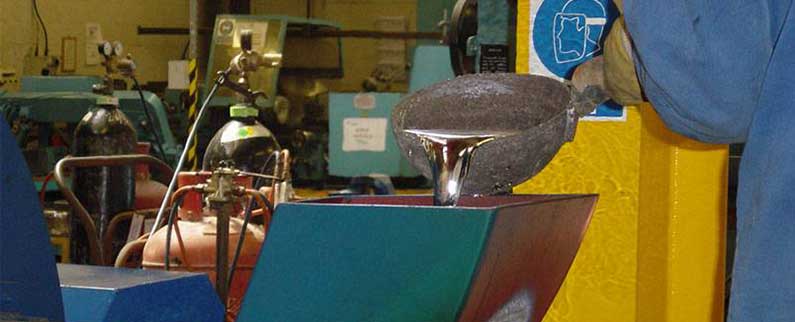Centrifugal Casting Process

Centrifugal casting is a manufacturing process used to produce cylindrical components by using the forces generated by centrifugal motion. Centrifugal casting is a highly efficient and versatile process for producing high-quality cylindrical and symmetrical parts. Its ability to produce parts with superior mechanical properties and minimal defects makes it a preferred choice in various industrial applications.
Basic Principles
- Mold Rotation: The process begins with a cylindrical mold, which is rotated at high speeds around its central axis. This rotation can be either horizontal or vertical, depending on the dimensional characteristics of the final product.
- Molten Metal Pouring: Molten metal is poured into the rotating mold. The centrifugal force generated by the mold's rotation forces the molten metal to the mold’s side walls, creating a dense and uniform structure.
- Solidification: As the metal cools and solidifies, it forms a casting that matches the shape of the mold’s interior. The centrifugal force ensures that the metal is uniformly distributed, reducing the occurrence of defects such as gas bubbles and impurities.
Types of Centrifugal Casting
- True Centrifugal Casting: This method is used to produce hollow, cylindrical parts such as pipes, bushings, and rings. The mold rotates about its axis and the centrifugal force pushes the molten metal against the mold walls, forming a hollow cylinder.
- Semi-Centrifugal Casting: This variation is used to create solid castings with rotational symmetry, such as wheels and pulleys. A rotating mold is still used, but a core is placed in the center to form the part’s interior structure.
- Centrifuge Casting: Used for small, complex shapes, this method involves placing multiple molds about a sprue. The centrifuge spins, forcing the molten metal into the molds.
Advantages
- Improved Mechanical Properties: The centrifugal force ensures a high-density casting with minimal porosity and inclusions, resulting in superior mechanical properties. Any slag moves to the casting's inside diameter.
- Uniform Grain Structure: The rapid cooling and solidification lead to a fine-grain structure, enhancing the material’s strength and durability.
- Reduced Material Waste: The precise control over the amount of molten metal used reduces waste.
- Versatility: Suitable for various ferrous and non-ferrous metals and alloys, including iron, steel, aluminum, and bronze.
Applications
- Pipes and Tubes: Widely used for producing pipes and tubes for the oil and gas industry, water supply systems, and other infrastructure projects.
- Rings and Bushings: Commonly used in automotive and aerospace industries for components like bearings and gears.
- Babbitt Bearings and Brake Drums: These applications utilize a steel part as the die. Metal is poured into the rotating part and it creates a lining.
- Structural Components: Used for manufacturing high-strength, wear-resistant components such as turbine blades and impellers.
Process Steps
- Preparation: The mold is prepared and coated with a refractory material to prevent the molten metal from sticking.
- Heating and Melting: The metal is heated until it reaches a molten state.
- Pouring: The molten metal is carefully poured into the rotating mold.
- Solidification and Cooling: The metal solidifies against the mold walls as it cools.
- Extraction: Once cooled, the solidified casting is removed from the mold.
- Finishing: The casting is machined or finished to meet the final specifications.
For Babbitt bearings the process is beneficial because the part is reusable after the lining wears, allowing foundries to reline the bearing.
For Brake drums, this process is beneficial because of the reduced weight of the drum. This reduced overall weight on the vehicle the drum is on and increases fuel efficiency.


